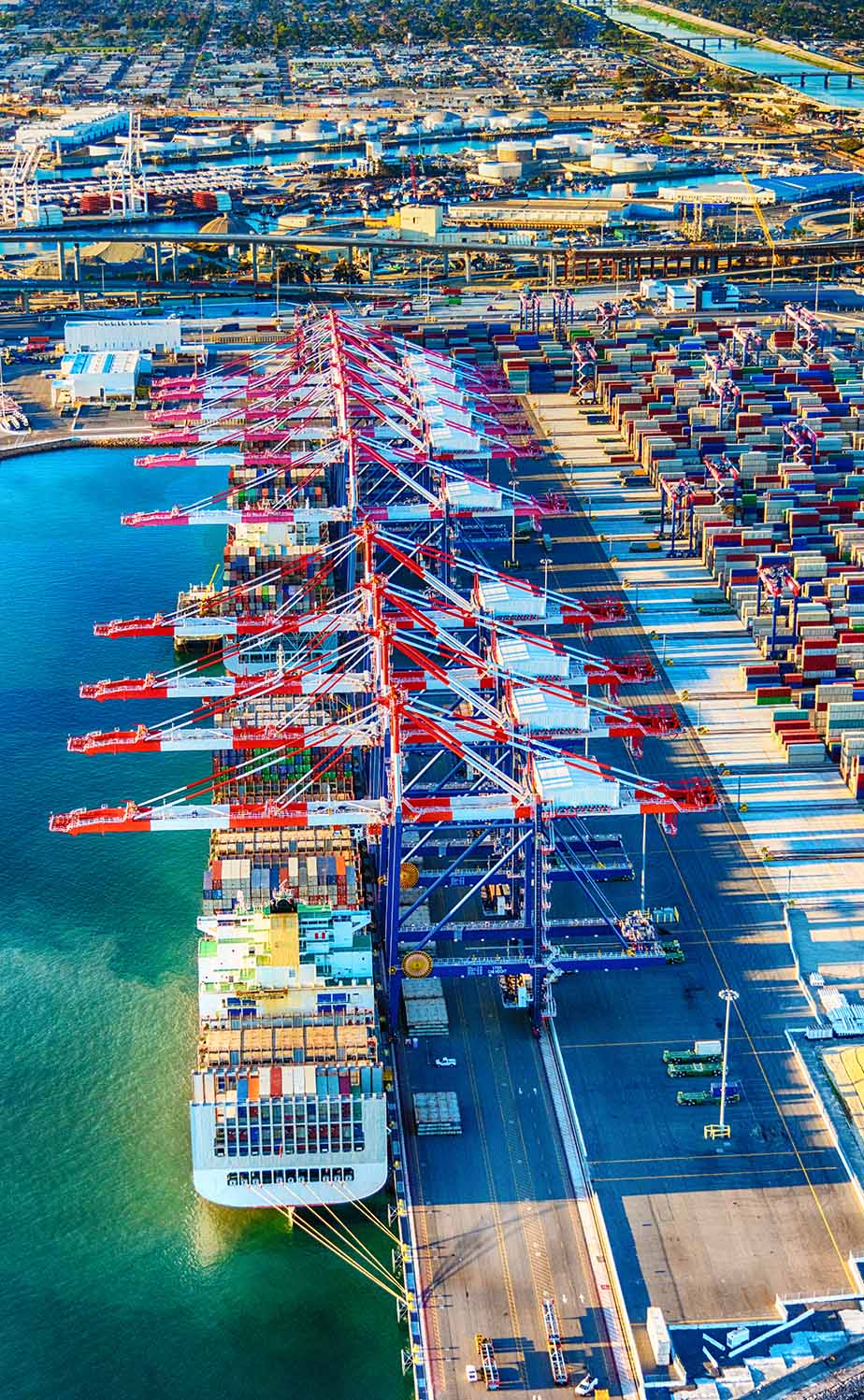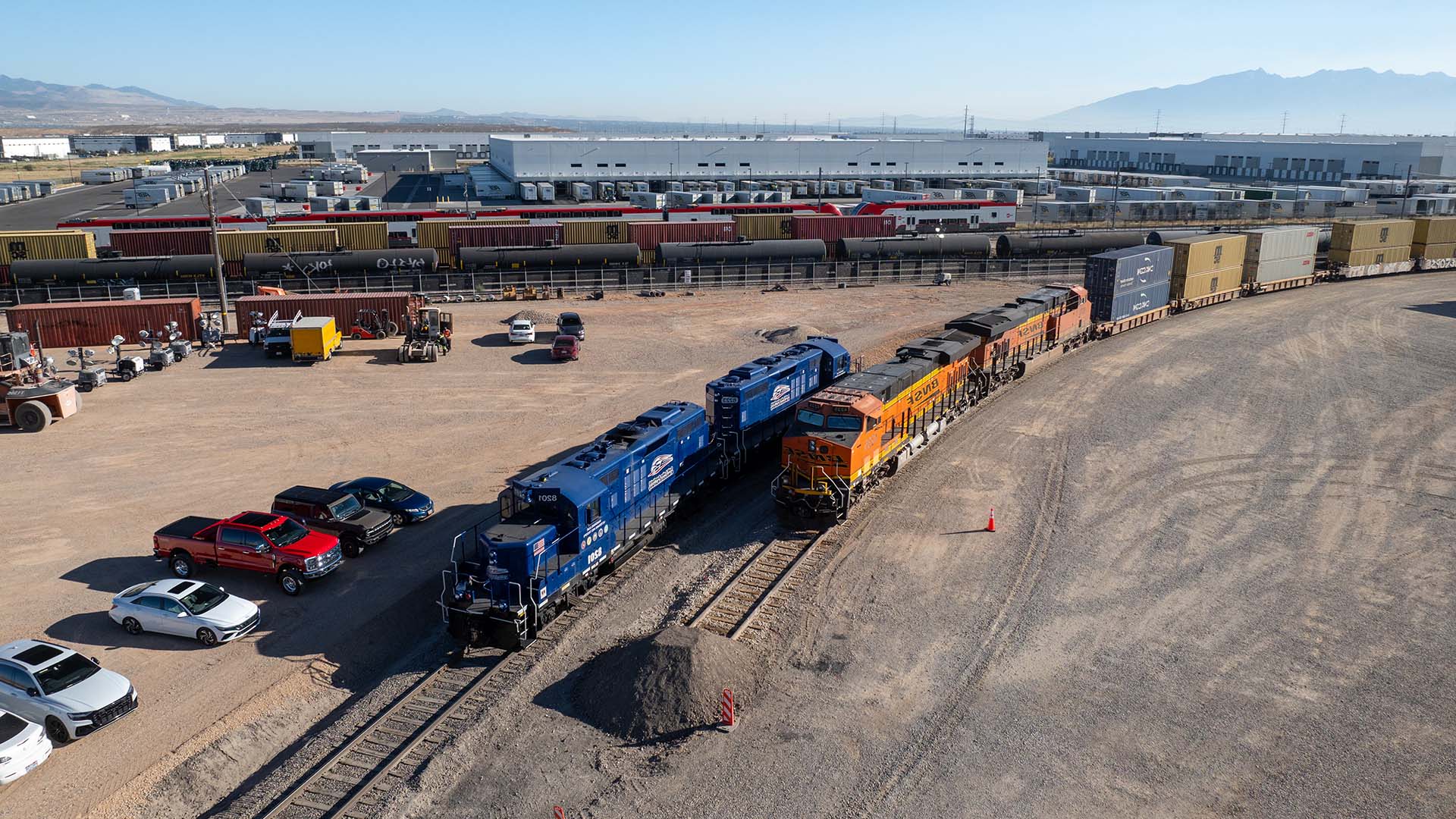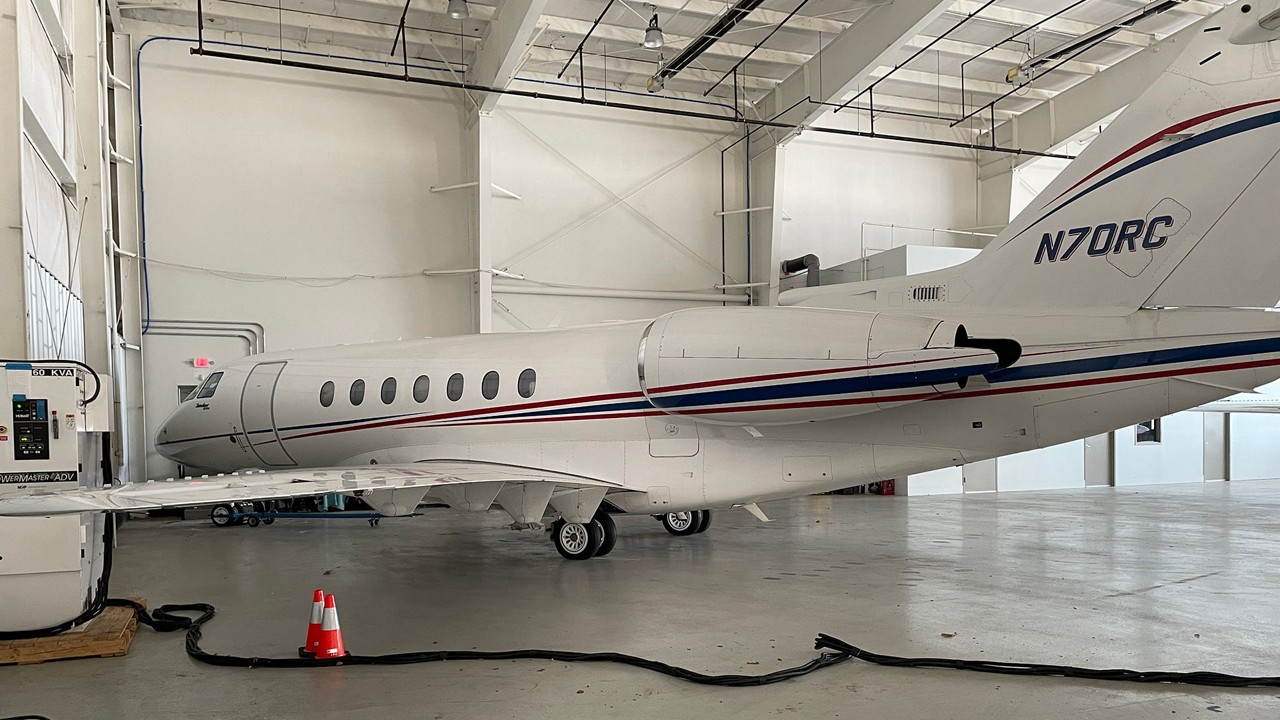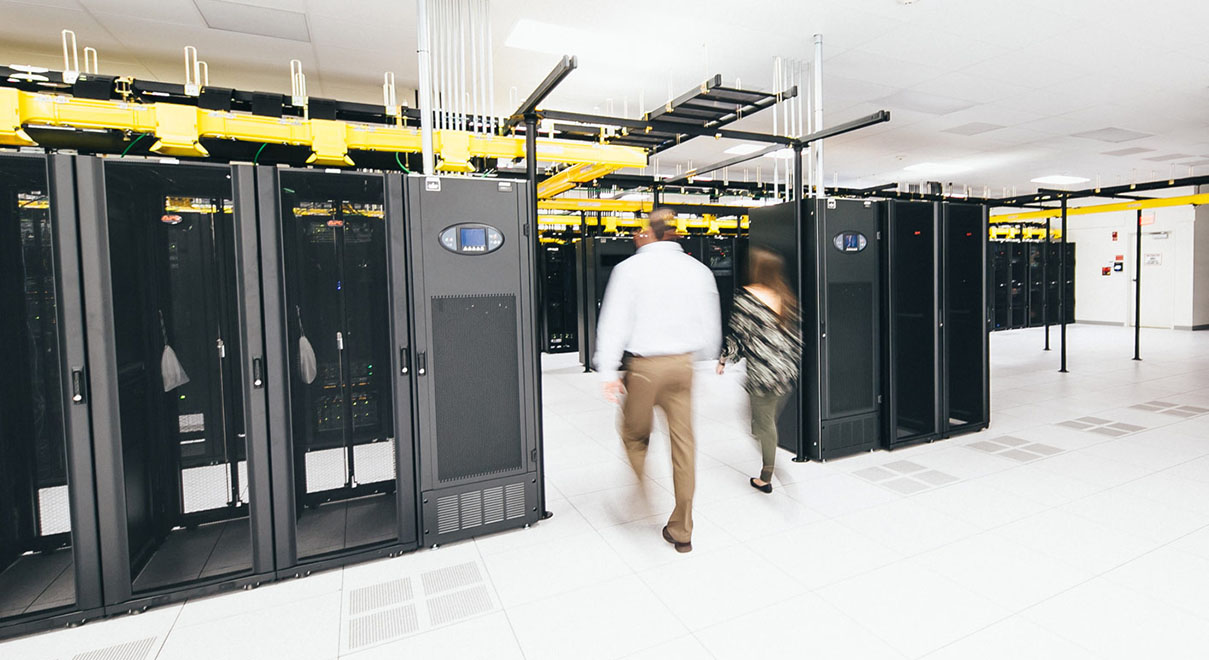Tariff uncertainty
The changes in US Federal government policy in 2025 impacted trade flows with knock-on effects on the transport infrastructure which facilitates trade. To get a grasp on the effect of the changes in US trade policy, look at the country’s busiest port complex, Los Angeles and Long Beach, gateway to the US for Asian exports. Ten straight months of year-on-year growth to April 2025 declined sharply in May.
In anticipation of tariffs, importers had been frontloading inventory even ahead of the election result. Yet while some subsectors of transportation infrastructure such as ports are more directly exposed to these changes in policy, are there other areas of relative stability and opportunity?
As owners of and investors in US infrastructure and related businesses, we have focused on sectors and regions that should be stable and potentially prosper as the country aims to pivot towards greater domestic manufacturing.

Long Beach port, Los Angeles
Essentiality of transportation services
Essential transportation infrastructure such as toll roads, ports and logistics, rail, and airports, while not usually providing contracted long-term revenues, are predictable given the essentiality of service, extremely high barriers to entry and asset intensity – coupled with strong linkage to GDP and population growth.
The question for infrastructure investors going forward is how to identify predictable revenues in a world where international shippers and their supply chain may reconfigure their networks in order to respond to tariffs and other policy changes. In some ways, the changes are a continuation of an environment that has been extremely dynamic since the Covid-pandemic and the resulting severe supply-chain bottlenecks. That supply-chain crisis forced a rethink for many companies, to better prioritize resilience and less dependency on any single supplier, channel or gateway.
"The question for infrastructure investors going forward is how to identify predictable revenues in a world where international shippers and their supply chain may reconfigure their networks in order to respond to tariffs and other policy changes."
Igneo’s middle-market focus has led us to invest in subsectors of transportation infrastructure that are more domestically oriented and therefore more insulated from the uncertainties of international trade. While not directly correlated, this domestic emphasis aligns with our middle-market approach, which tends to focus on specific, attractive subsectors, and strong regional players, rather than large or broadscale national and international companies. This allows us, and our portfolio companies, to remain nimble and pursue growth opportunities coupled with defensive characteristics.

John Ma
Partner, Co-Head of North America
“As owners of and investors in US infrastructure and related businesses, we have focused on sectors and regions that should be stable and potentially prosper as the country aims to pivot towards greater domestic manufacturing.”
Patriot Rail: Playing the short (line rail) game
US freight rail is decidedly old-fashioned - John Stevens demonstrated a steam locomotive in New Jersey just one year after George Stephenson’s Rocket carried passengers in England. As a much larger country, the US benefitted further and faster in terms of population spread and economic growth from the railway boom of the 19th century.
To this day, many US freight rail lines still offer a uniquely efficient service to domestic industrial customers. There are numerous mills, factories and mines in locations where the availability of alternative routes to get heavy goods out to the wider world and major population centres is limited. While there are almost 140,000 route miles of freight rail in the US - enabling transcontinental coverage - some of these so-called “short lines” are just a few miles long, part of a branch line system that feeds into the much larger North American network.
Nevertheless, some of the shortest are the most defensive, offering manufacturers an essential conduit for the first miles of goods transport. The Staggers Act of 1980 reformed industry regulation, ushering in a much lighter, business-friendly regime and breathed new life into freight rail after decades of decline. This deregulation led to the divestiture of many of these branch “short lines” and helps explain, in part, why there remains a remarkable number of private freight rail owners in the US with just one or two lines.

Varun Sablok
Managing Director, North America
“Patriot is a high-quality essential rail platform providing opportunities for organic and inorganic growth. Our active management approach, partnering with senior management, is driving shareholder value creation.”
In the current environment of volatility and uncertainty in international trade values, an appealing characteristic of the short line rail industry is the relative insulation of these domestically focused businesses from events elsewhere in the world. It is not perfect isolation but does mitigate quandaries such as the effects of tariffs. Patriot Rail has 31 short lines covering over 1,200 route miles in 23 states; from Gettysburg, Pennsylvania down to Central Texas and over to the Columbia & Cowlitz line in Washington State. Importantly, over 90% of the freight volume these lines carry is entirely domestic from origin to destination – not just the segment of their journey that Patriot handles. Key commodities include pulp & paper and forest products, speciality chemicals and other heavy industrial goods.
Less than 10% of revenue from the lines under the Patriot Rail banner are derived from business with any international linkage. Moreover, Patriot Rail is very selective in seeking exposure to intermodal transport, where rail facilitates volumes coming from ports. This means there is less concern over the impact of tariffs on global supply chains. Patriot currently has no exposure to the automotive sector, which has been impacted by cross-border trade issues and tariff uncertainty between the US, Canada, and Mexico given the complex North American automotive supply chain.
Patriot Rail key info
- Location: North America
- Sector: Transport
- Risk Classification: volume
- Initial Acquisition date: Oct 2019
- Governance: lead
- Website: patriotrail.com/
Attractive characteristics
- Essential service and sticky customers: majority of Patriot railroads have dual Class 1 interconnections leading to long-term overall freight cost benefits for customers
- Inflation protection: through pricing authority on its volumes, with favorable regulation
- High margins: short / dense railroads leading to efficient operations
- Platform growth opportunity: Highly fragmented sector following deregulation, with many small privately held assets
Whilst we haven’t yet seen, nor are we counting on, meaningful reshoring of manufacturing,it does present a longer-term growth opportunity. In the near term, an environment where industrial and manufacturing companies, the core of Patriot’s customer base, have confidence to make multi-year capital investments to expand capacity would help accelerate growth.
Igneo successfully refinanced the business this year, in a show of confidence by credit markets in the resilience and strength of the business. Patriot Rail’s new chief executive has led the successful creation of two partnerships to develop and operate facilities with the large Class 1 railroads. These projects will help boost carload volumes and expand revenue. Such partnership developments in growth markets are evidence that there is plenty of room to build out the business.
"Patriot Rail’s new chief executive has led the successful creation of two partnerships to develop and operate facilities with the large Class 1 railroads."
Control, regulation, and therefore market dynamics for many subsectors of transport and logistics are at the state and local levels in the US. That means working with state capitals, not just Washington DC, to maintain and foster support for rail infrastructure.Local politicians see good quality rail infrastructure as facilitating manufacturing activity, jobs, and economic growth.
The Federal government has helped support freight rail through competitive grant funding programs, and that Federal support has not reversed under the new Administration – evidence of freight rail infrastructure’s broad, bipartisan support.
Infinity Aviation: To Infinity and beyond
Steel wheels are not the only form of transport to interest us in North America. Another mode of transport which is growing rapidly is private general, or non-commercial, aviation. There is plenty of this activity in the US, with over three and a half million private jet flights in 2023, according to JetFinder, There has been a steady rise in total flight hours in North America and, importantly, significant increase in the need for hangar capacity, as both the number and size of private and corporate airplanes expands in a country of more than eight million square kilometres1, with population centres and areas of economic activity spread out across that landmass.
"A report by Honeywell Aerospace Technologies predicts that 830 business jets worth USD27bn will be built this year."
A report by Honeywell Aerospace Technologies predicts that 830 business jets worth USD27bn will be built this year. Even though most of those will go to meet demand in the US, we estimates that there is still a three-year backlog of orders for general aviation aircraft in the US.

Julie Furber
Managing Director, North America
“We are excited by the prospects for Infinity in secondary general aviation facilities, which includes looking for other FBO operations and hangar space at other airports.”
Earlier this year, Igneo acquired Infinity Aviation;a fixed-base operator (FBO), offering fuelling services and hangars for non-commercial, private general aviation aircraft. These are predominantly lighter jets used by businesses and high-net-worth individuals, plus some cargo operations. This market is flourishing, especially in America, in part because of novel means of accessibility, including fractional jet ownership and jet cards, which allow flyers to buy hours of flight time on a plane without owning the plane itself. The planes themselves are getting larger, necessitating increased hangar capacity.
The long-term trend of private flying accelerated during COVID. The Honeywell report noted a 32% growth in expenditure on new aircraft from 2019 to 2023. Competition among jet card providers and the schemes to rent or part-own a plane are helping to “democratize” private air travel beyond corporates and ultra-high-net-worth individuals.
Infinity Aviation key info
- Location: North America
- Sector: Transport
- Risk Classification: volume
- Initial Acquisition date: Jun 2025
- Governance: sole
- Website: infinityfbo.com
Value Creation Opportunity
- Attractive entry multiples relative to Tier 1/large cap platform valuations >15x
- Multiple levers for value creation including (i) institutionalizing with professional management, (ii) operational improvements including through technology, and (iii) growth through disciplined capital investment in assets
- Robust range of exit alternatives for middle-market, quality FBO businesses
Where Infinity Aviation comes in is housing the growing number of these vehicles. Major airports, including general aviation airport facilities located in or near big cities are reaching capacity. Planes are getting larger, and existing hangars are full already. So it makes sense for business jets to be stationed for their home base in less crowded and less expensive hangars beyond the city limits. From here they can be called in to make journeys when required. Infinity Aviation already operates at one such airport 50 miles from Boston.
Regarding the characteristics of fixed-base operations, fuel sales are linked to flight activity. Defensively, the fixed hangar rents – against a backdrop of shortage in available hangars - gives the business downside protection. Aircraft need a place to park and be stored regardless of economic cycle.
True to our focus, we have alighted on a middle-market opportunity to invest in the fixed-based operations sector. There are two large national players, with more than one hundred locations each, focused on so-called Tier 1 general aviation airports. We are excited by the prospects for Infinity in secondary general aviation facilities, which includes looking for other FBO operations and hangar space at other airports.
Patriot Rail and Infinity Aviation are two examples of our approach to North America. We seek to invest in businesses with defensive revenue characteristics acquired by meeting essential needs of the economy alongside strong growth prospects derived from long-term trends. The middle-market nature of our focus means that investors are getting access to the domestic US economy, within a diversified strategy, rather than international enterprises.
1 Excluding Alaska and Hawaii
Find out about our capabilities in North America
With 30+ years middle-market expertise, Igneo's proactive management approach offers attractive risk-adjusted returns for our clients.
Important information
All data sources are independently verified and can be evidenced by Igneo Infrastructure Partners.
This material is for general information purposes only. It does not constitute investment or financial advice and does not take into account any specific investment objectives, financial situation or needs. This is not an offer to provide asset management services, is not a recommendation or an offer or solicitation to buy, hold or sell any security or to execute any agreement for portfolio management or investment advisory services and this material has not been prepared in connection with any such offer. Before making any investment decision you should consider, with the assistance of a financial advisor, your individual investment needs, objectives and financial situation.
We have taken reasonable care to ensure that this material is accurate, current, and complete and fit for its intended purpose and audience as at the date of publication. No assurance is given or liability accepted regarding the accuracy, validity or completeness of this material and we do not undertake to update it in future if circumstances change.
To the extent this material contains any expression of opinion or forward looking statements, such opinions and statements are based on assumptions, matters and sources believed to be true and reliable at the time of publication only. This material reflects the views of the individual writers only. Those views may change, may not prove to be valid and may not reflect the views of everyone at Igneo Infrastructure Partners or First Sentier Group.
About First Sentier Group
References to 'we', 'us' or 'our' are references to Igneo Infrastructure Partners or First Sentier Group (as applicable). First Sentier Group is a global asset management business which is ultimately owned by Mitsubishi UFJ Financial Group. Igneo Infrastructure Partners is an unlisted infrastructure asset management business and is part of the First Sentier Group.
We communicate and conduct business through different legal entities in different locations. This material is communicated in:
- Australia and New Zealand by First Sentier Investors (Australia) RE Ltd, authorised and regulated in Australia by the Australian Securities and Investments Commission (AFSL 240550; ABN 13 006 464 428)
- European Economic Area by First Sentier Investors (Ireland) Limited, authorised and regulated in Ireland by the Central Bank of Ireland (CBI reg no. C182306; reg office 70 Sir John Rogerson's Quay, Dublin 2, Ireland; reg company no. 629188)
- Hong Kong by First Sentier Investors (Hong Kong) Limited and has not been reviewed by the Securities & Futures Commission in Hong Kong. First Sentier Investors and Igneo Infrastructure Partners are business names of First Sentier Investors (Hong Kong) Limited.
- Singapore by First Sentier Investors (Singapore) (reg company no. 196900420D) and this advertisement or material has not been reviewed by the Monetary Authority of Singapore. First Sentier Investors (registration number 53236800B) and Igneo Infrastructure Partners (registration number 53447928J) are business divisions of First Sentier Investors (Singapore).
- United Kingdom by First Sentier Investors International IM Limited, authorised and regulated by the Financial Conduct Authority (reg. no. SC079063, reg office 23 St Andrew Square, Edinburgh, Scotland, EH2 1BB)
- United States by First Sentier Investors (US) LLC, registered with the Securities Exchange Commission (RIA 801#93167)
- Other jurisdictions, where this document may lawfully be issued, by First Sentier Investors International IM Limited, authorised and regulated in the UK by the Financial Conduct Authority (FCA ref no. 122512; Registered office: 23 St. Andrew Square, Edinburgh, EH2 1BB; Company no. SC079063).
To the extent permitted by law, MUFG and its subsidiaries are not liable for any loss or damage as a result of reliance on any statement or information contained in this document. Neither MUFG nor any of its subsidiaries guarantee the performance of any investment products referred to in this document or the repayment of capital. Any investments referred to are not deposits or other liabilities of MUFG or its subsidiaries, and are subject to investment risk, including loss of income and capital invested.
© Igneo Infrastructure Partners




